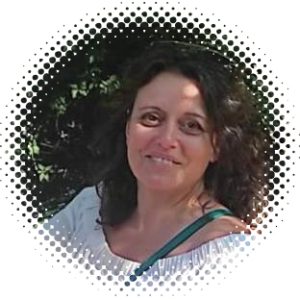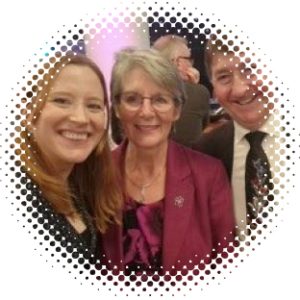Pattern-Cog stands for “Personalised ageing pattern for early risk detection and prevention of cognitive impairment and dementia in cognitively healthy individual”. Funded for a period of three years, the project aims to improve dementia prevention strategies by developing and validating an Artificial-Intelligence (AI)-based framework that can detect the earliest signs of impending cognitive decline.
Pattern-Cog will develop methods for predicting future cognitive decline based on clinical data, identifying older adults who might be at higher risk for mild cognitive impairment and dementia. This methodology will be tested in ongoing dementia prevention trials. Instead of a standard machine learning approach, the Pattern-Cog project proposes an innovative concept of personalised ageing pattern rooted in data from healthy individuals.
ERA PerMed is an ERA-Net Cofund, supported by 32 partners from 23 countries and cofounded by the European Commission. To align national research strategies, promote excellence, reinforce the competitiveness of European players in Personalised Medicine (PM), and enhance the European collaboration with non-EU countries, national funding organisations have agreed to launch Joint Transnational Calls for collaborative innovative research projects in PM.
Pattern-Cog has been funded for a period of 3 years from 2022 through the 4th Joint Translational Call 2021 (JTC2021). 217 eligible pre-proposals were submitted, 59 consortia were invited to submit a full-proposal and 22 consortia with a total funding amount of 26,776,871€ have be funded!
Dementia is an umbrella term used to describe a set of symptoms that can include memory loss, confusion, and difficulties with language. There are many different types of dementia and these can affect people differently and cause different symptoms.
Alzheimer’s disease is a specific type of dementia in which symptoms usually develop slowly and gets worse over time. Alzheimer’s disease is the most common cause of dementia, but not everyone with dementia has Alzheimer’s disease. There are currently no available treatments or cures for dementia and Alzheimer’s disease in Europe.
During the last few years, new conceptual approaches and criteria to describe Alzheimer’s disease have been developed referring to the spectrum of Alzheimer’s disease in three stages: (1) preclinical Alzheimer’s disease, (2) mild cognitive impairment (MCI) due to Alzheimer’s disease, and (3) dementia due to Alzheimer’s disease. You can read more about the changing definition of Alzheimer’s disease here.
Mild Cognitive Impairment (MCI) is often considered as the stage between the expected cognitive decline of normal ageing and the more significant decline of dementia. It may increase a person’s risk of later developing dementia but some people with mild cognitive impairment don’t deteriorate further and some eventually get better.
People with MCI due to Alzheimer’s disease often experience very mild changes in their cognitive abilities, such as difficulties with memory, keeping track of conversations, orientation, planning and decision making. These changes may cause concern but do not significantly impact on people’s daily lives.
There is currently no available cure for dementia and Alzheimer’s disease in Europe. There is now compelling evidence that the signs of Alzheimer’s disease can be found in the brain decades before the first symptoms appear, providing a window of opportunity for preventative intervention. Researchers believe that detection and early intervention may be a more effective way to tackle the condition.
To that end, the overarching goal of Pattern-Cog is to improve dementia prevention strategies by developing support tools for the detection of earliest signs of impending cognitive decline.

My name is Paddy Crosbie and I live in Dalkey in Dublin, Ireland. I cared for my husband Derek who was diagnosed with early-onset Alzheimer’s disease when he was 58. Sadly Derek passed away in November 2021. I have been involved with the Dementia Carers Campaign Network (which is supported by The Alzheimer Society of Ireland) since it was founded in 2013. Due to caring responsibilities I had to take a back seat for a few years, but when Derek moved into full time care, I was able to become more involved in the network.

I am Chris from Tallinn, Estonia. I joined the NGO Life with Dementia in Estonia shortly after my mother's diagnosis of Alzheimer disease. My journey as caregiver lasted more than six years. The journey was colorful and consisted of different experiences. I do actively share the journey and my learning with the aim of increasing awareness and diminishing the stigma around dementia. Knowing the challenges and pain points of a life with dementia, I am happy to contribute to the situation of people living with dementia and their carers well-being by representing them. I do believe that people with dementia do deserve more respect and they need to be treated with more dignity.

My name is Zornitsa Karagyozova. I am originally from Sofia, the capital of Bulgaria. I am 52 years old, married and have two teenage sons. I have attained a Law degree and I’m currently working as Legal Advisor in a private company.
My personal meeting with Alzheimer’s disease began in 2020 when my father (then aged 78) was diagnosed with it. Since he is still in the first stage my main concern is to encourage him to not give up practicing of all his hobbies – travelling, sports, reading, learning English language, as all these activities support him in maintaining his good physical and mental condition.
I am extremely grateful that the civil association “Alzheimer Bulgaria” has been established as there is a lack of government, healthcare authorities and social supports for the families of individuals living with Alzheimer’s disease. All the projects of “Alzheimer Bulgaria” aimed at helping these families are achieved predominantly with voluntary work which further boosts my satisfaction about the nomination I’ve received.
Thus, my main motivation to be part of “Alzheimer Bulgaria” and this working group is to help make the problems of elderly people with dementia to become visible for the authorities as well as the society. Furthermore, I will aim to provide carers with all needed information by exchanging practices with the European community in order for people with dementia to be given the opportunity to live a fully worthy life.

Sonata Maciulskyte lives in Klaipeda, a port-city on the Eastern shore of the Baltic Sea, in Lithuania. She's a caregiver since 2014 when her mother was diagnosed with Parkinson’s disease, and the first signs of pre-dementia started to show up in her behaviour in 2015. During the same period, she was awarded the doctoral degree in Social Sciences (Social Work), had been carrying out academic activities and successfully pursued a professional career, becoming the vice-rector of a university, the chairwoman of the national committee that formed the higher education policy in her country. Now that her mother lives in a care home, she is more successful in finding a balance between her professional and caring responsibilities, and personal interests such as sports, spending time outdoors, and enjoying community activities.

Magnus´s wife, Elly was diagnosed with young onset Alzheimer´s disease at the age of 51 in 2016. Elly has been a trailblazer since her diagnoses. She gave a highly visible public talk after her diagnosis and several media interviews. She has been convinced that Alzheimer´s disease should be destigmatized through open and honest discussion. Elly was the first chairperson of the Icelandic working group of people with dementia. She moved to a care home in the spring of 2022, but continues to be positive and an inspiration to Magnus and everyone that knows her. Magnus has been following in her footsteps by talking about living with Alzheimer's through social media and media interviews. He is a professor of medicine and researcher but has, in his role as spouse and caregiver, focused on the the non-medical issues of Alzheimer's.

My name is Filomena Martins Cunha, I have 62 years, and I'm living by the sea in a locality called Algés, in the metropolitan area of Lisbon. I have a degree in Organizational Psychology and have always worked in human resources management. I currently dedicate my time to volunteering, notably as a member of the national board of Alzheimer Portugal.
Seven years ago, my mother was diagnosed with dementia (Alzheimer's disease), and since that date and until her death 5 months ago, my sister, and I were her carers. I am an active person, social and with varied interests ranging from swimming, and hiking with my dogs, to reading, horticulture, and gardening.

Hello! My name is Barry Northedge, I’m 65 years young and live in the Highlands of Scotland about a mile away from the shores of Loch Ness (don’t let anyone tell you that the Loch Ness monster doesn’t exist..), it is a beautiful part of the world.
My wife, Margaret was diagnosed with early onset Alzheimer’s disease about eight years ago when she was 55 years old, our life changed. She had no choice but to give up a job that she enjoyed and felt ‘lost’ but she has since become an active member of the Scottish Dementia Working Group campaigning on behalf of the thousands of people who are living with dementia. She remains a positive and active role model who, I believe, is an inspiration.
I spent a career working in all forms of education. I was a teacher, youth worker, trained long term unemployed adults, managed Outdoor Education in Highland and, latterly, managed school improvement, similar to a schools inspector. I loved every phase of my career but retired just over three years ago to support Margaret. Since retirement we have been actively involved in dementia research and training, we have both just been elected to the Board of Trustees for Alzheimer Scotland and now I am particularly fortunate to be able to join the EDCWG.

Following a career as an international marketer director in business software, Trevor chose to step away from his role in 2011 when it became evident he needed to devote time to his wife, Yvonne, and her emerging memory problems which were eventually diagnosed as young onset Alzheimer’s disease when she was 57 years old.
His approach to looking after her emulated the style he adopted in his work life, namely to see obstacles simply as inconveniences which have to be circumnavigated…….no ifs, no buts, no choice.
With Yvonne in a care home since 2019, Trevor supports other carers and always with a positive, decisive outlook on life. He is a regular speaker at events and in the media, helping to raise awareness about those living with dementia and the challenges faced by family members who support them.
Trevor lives in North West London, not far from the famous Wembley Stadium, and has two children and two young grandsons.

I am Liv Thorsen from Gjøvik, Norway. Gjøvik is a small town north from Oslo and is situated next to the largest lake in Norway.
As a psychiatric nurse and teacher I have been working in patient and relative education for many years, also for carers of people with dementia. My husband, Kjell got an Alzheimer diagnose eight years ago, and we live together in a little house with a nice garden. We have 5 children and 11 grandchildren.
I am also the chairman for our local dementia organisation, and a local politician.

Peter is a data scientist and bioinformatician with two PhDs in computer science (from Slovakia and the USA). Between 2015 and 2020, he researched Parkinson's disease at the Luxembourg Centre for Systems Biomedicine. Afterwards, he transitioned to the industry and (co)founded two companies: Cequence and Edena Technologies, with the main focus on machine learning, AI, and blockchain.
In 2018, Peter's mother was diagnosed with Alzheimer's disease and experienced a rapid disease progression. He currently lives with his wife, three kids, and a dog in Graz, Austria. His hobbies include reading graphic novels, numismatics, and hiking.

My name is Paola Borghesi, I'm 65 and live in Rome. I've been working for a bank for 37 years as Operation Manager, and now I'm retired.
My mother lived with Alzheimer's disease from the age of 75 to her death, when she was 89, two years ago. At the beginning it was very hard to accept the new person she was going to be, but I was always with her, trying to learn how to make her comfortable and safe.
In 2021, after her death, Prof. Luisa Bartorelli called me and I accepted to support Alzheimer Uniti Roma as advisor to help people who live with Alzheimer's disease. The Alzheimer Caffè Garbatella, where I work as a volunteer, is becoming very popular and every time there are new persons with their carer participating. This makes me happy.

My name is Sylva Dneboská, I am from Prague, the capital of the Czech Rebublic, I am retired. During my active life I worked in the insurance industry which I left at the end of my career and started to work in social care. When my husband Miloš was diagnosted with Alzheimer's disease, I started to take care of him, what I had been doing for more than 7 years. At the beginning I continued working part time, but later on I took 100 per cent care of him.
At that time, I started to cooperate with some organisations providing care to people with dementia, in order to learn as much as possible about this subject e.g. with a daily stationary for people with Alzheimer's disease in Prague called "Senorina Center" as well as with the Czech Alzheimer Society situated in Prague. I am still in touch with both of them.
Despite of the fact that my husband passed away in May, 2022, I am in touch with people of different ages who are taking care of their partners, parents, family members, friends and can be of some assistance to them. I would like to share my experience with you, the group members, and learn from you a lot of useful and interesting things.

Roslynn Vella
So... My first encounter with the term Alzheimer’s disease was when I was binging the TV series 'Grey’s Anatomy’ some 15 years ago... Fast forward to 9 years ago, I came to the realisation that my mother had early-onset dementia, while she was still in her prime of life, at the age of 58. My mother, Elizabeth, also known as Alice, was a very active woman in our society, leading a public life as politician. She also served as a mayor of our local town. I grew up in a family where both my parents were actively involved on a social level within our community, through various organisations advocating for some good cause in relation to the improvement of quality of life.
It was a natural choice for me to proceed with my professional degree in Social Work, and later on mastering in the fields of Human Resources, Training and Social Policy. My experience in social work touches an array of areas, from children living in alternative care, intake services, elderly services, prisoners and housing services. I have spent ten years working within a social policy context where I was involved in national projects in the education and social ministries. where I have married my baggage of skills and knowledge to the fruition in the implementation of projects impacting families directly (such as the Free Child Care Scheme, Breakfast Clubs in Schools and Free School Transport for All). For the last four years, I have worked within the largest private company in Malta managing elderly homes, leading one of the facilities through COVID the pandemic and beyond. I have now recently moved on to a new appointment with Hospice Malta, in the role of Chief Operations Officer.
For many years, I have contributed in the executive committee of the Maltese Association for Social Workers, representing it on the Malta Federation of Professional Bodies as well as the Malta Social Work Profession Board. I have followed and supported the work of the Malta Dementia Society, for the past years, due to my personal involvement with the illness. In the last year, I was encouraged to join the Executive Committee of the Society, whereby we are working to create a social work program to be able to support families and caregivers of people with Alzheimer's disease.
The care for my mother is a top priority for me on a daily basis. Together with my father and my brother, my mother lives in our family home in the centre of the community, as we are her main carers. We are also very much supported by our extended family… very lucky and grateful to have such a close knit family relations here in Malta.
Now here I am, sitting on the European Dementia Carers Working Group, after being nominated by the Malta Dementia Society, very honoured I must say, and surely looking forward to contribute on the European level in order to improve the quality of life of families affected by dementia.
Katarzyna Mazuruk-Russ
Katarzyna was nominated by Polskie Stowarzyszenie Pomocy Osobom z Chorobą Alzheimera.
